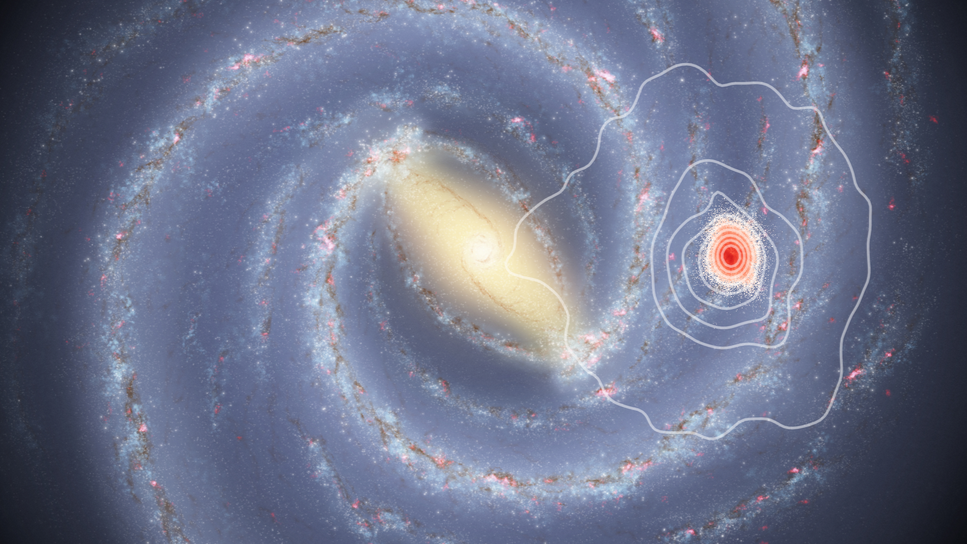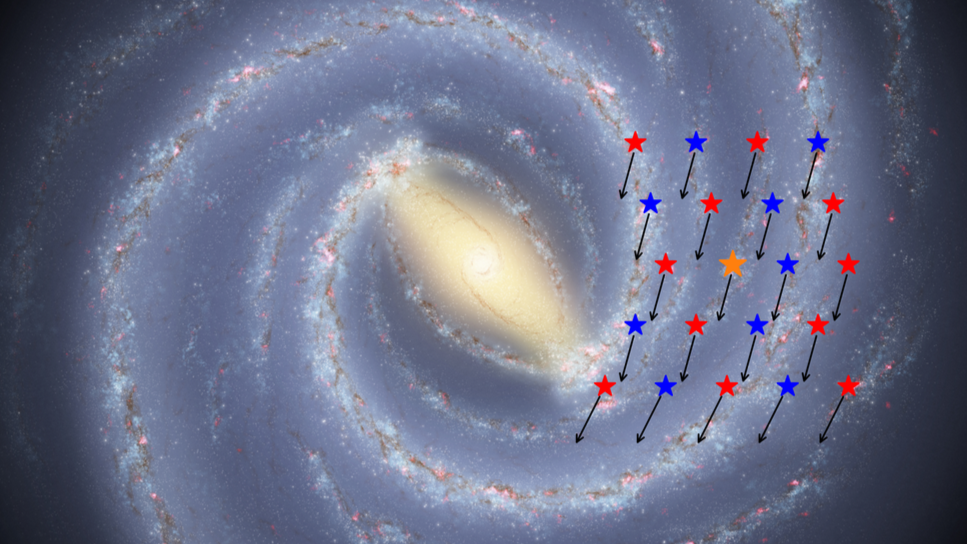Group of ancient stars spotted near the sun could rewrite the Milky Way's history
Researchers using the Gaia space telescope studied some ancient stars near the sun, revealing that our corner of the Milky Way may be billions of years older than once thought.

Ancient stars located surprisingly near to our sun formed less than a billion years after the Big Bang — suggesting part of the Milky Way is much older than previously thought, a study has found.
Most stars, including the sun, are located in a thin disk rotating around the center of the galaxy. Researchers thought this disk formed around 8 to 10 billion years ago, but with the help of machine learning, they've found some of its stars are more than 13 billion years old.
Researchers dated these ancient stars by studying data collected by the European Space Agency's Gaia spacecraft and posted their findings to the pre-print arXiv server earlier this year. The Leibniz Institute for Astrophysics Potsdam (AIP) in Germany announced the discovery on Wednesday, July 31.
The universe is around 13.8 billion years old, so the presence of 13 billion-year-old stars in our galaxy's thin disk means that the disk must have formed in the first billion years following the birth of the universe — pushing back our galaxy's star formation timeline in a huge way.
"These ancient stars in the disc suggest that the formation of the Milky Way's thin disc began much earlier than previously believed, by about 4-5 billion years," study lead author Samir Nepal, a doctoral candidate studying the Milky Way at AIP, said in a statement.
Scientists are piecing together the history of the Milky Way with Gaia data to create maps that document the age, chemical composition and movement of its stars, according to the statement. The Milky Way contains more than 100 billion stars, so there's a lot to map.

For the new study, researchers looked at more than 800,000 stars in the solar neighborhood, which runs about 3,200 light-years around the sun; for comparison, the entire Milky Way is about 100,000 light-years wide. The team used machine learning to combine different data, giving measurements for variables like the age and metal content of the stars. This data revealed that the majority of these stars were older than 10 billion years old, and some were more than 13 billion years old.
Get the Space.com Newsletter
Breaking space news, the latest updates on rocket launches, skywatching events and more!
The stars' metal content is also surprising. Ancient stars are usually very metal-poor because they formed when the universe was mostly hydrogen and helium. However, some of the ancient stars in the study were metal-rich, with twice the amount of metals compared to our younger, 4.6-billion-year-old sun. These results indicate there was a rapid metal enrichment in the early stages of our galaxy, according to the statement.
"This study also highlights that our galaxy had an intense star formation at early epochs leading to very fast metal enrichment in the inner regions and the formation of the disc," Nepal said.
Gaia has uncovered many secrets about our galaxy's history, including previously unknown mergers with other galaxies, and remnants of the Milky Way's earliest building blocks. The spacecraft briefly stopped returning usable data after a small meteoroid impact earlier this year, but is now back in working order and predicted to continue its mission until the end of 2025.
Join our Space Forums to keep talking space on the latest missions, night sky and more! And if you have a news tip, correction or comment, let us know at: community@space.com.
Patrick Pester is a freelance writer for Space and previously a staff writer at Live Science. His background is in wildlife conservation and he has worked with endangered species around the world. Patrick holds a master's degree in international journalism from Cardiff University in the U.K.










